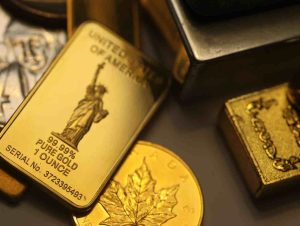Key takeaways
- Inflation increased by 0.4% in September, meaning high prices are likely to be around for some time yet.
- Some, like gold, have been around for thousands of years.
With the latest figures out, it’s clear that inflation isn’t going anywhere soon. The announcement for September saw prices rise by 0.4%, which brings the annual rate of inflation down ever-so-slightly to 8.2%.
In the context of a target inflation range of between 2-3%, the current rate is still eye wateringly high. With the Fed determined to bring it down through the hiking of interest rates, it is likely to continue to slowly come back down to earth.
The problem is that this could take a while, and investors still need to generate returns in the meantime. Luckily, there are a number of different investment assets that hold up well against inflation.
What does inflation do to investments?
A little bit of inflation is actually often considered a good thing for the economy as a whole. Prices that are rising modestly encourages people to go out and earn more and invest their money, and encourages companies to innovate and improve their businesses.
This is because if your wealth or income stands still, it goes backwards in real terms slowly over time as prices rise around you.
When inflation gets too high though, it puts pressure on household budgets and can reduce spending on certain things. The last year or two has been a perfect example of this. With the price of necessities such as gas, energy and food rising so much, many households have had to cut back on discretionary spending like electronic equipment, entertainment and vacations.
With less spending in the economy, companies generate lower revenues which in turn means they hire fewer people or even lay them off. This creates a negative spiral that puts the brakes on economic growth and is one of the reasons why the stock market has crashed this year.
Which investments perform well with high inflation?
There are a number of investments that can buck this trend when inflation is high. Now this isn’t to say that all of these will always outperform inflation. Different market cycles can cause volatility for different reasons, so as always the key is to diversify across the different assets available, rather than go all in on one or two.
Treasury Inflation Protected Securities (TIPS)
US Treasury securities are essentially loans to the US Government. When you see on the news that they’re borrowing $100m billion for an infrastructure program or military spending, Joe Biden doesn’t head down to the local Wells Fargo branch and fill out some loan paperwork.
To raise the funds, they issue Treasury Securities. Investors such as mutual funds, pension funds and individuals can then purchase these, which provide them a set rate of return over a set period of time, at the end of which they receive their money back.
So right now a 20 year US Treasury is paying a yield of 3.375%. This means that investors who buy $10,000 worth will receive a 3.375% return every year, and then after 20 years they’ll get their $10,000 back.
Now investors aren’t locked in for 20 years, they can sell the bond to another investor, but the bond itself will continue for the full time period.
The problem is that regular Treasuries don’t take into account inflation. So with inflation at 8.2% and a 20 year bond paying 3.375%, the real rate of return after inflation is actually -4.825%. Not a great deal for investors.
TIPS on the other hand, pay a set margin above the rate of inflation. The margin changes but is never less than 0.125%. This rate might look a lot lower than the standard bonds, but it can really pay off when inflation is high.
So as a hypothetical example, with inflation at 8.2% and a TIPS with a margin of 0.125%, the bond would be paying interest of 8.325%. That’s better than almost any other investment out there, especially when you consider it’s 100% backed by the security of the US Government.
It’s important to keep in mind that they can go the other way when inflation is low. If the inflation rate dropped to 1%, that same bond would now only be paying interest of 1.125%.
Gold
One of, if not the oldest investment asset in the world, gold still retains its position as an inflation hedge in today’s modern economy. The history of gold as a store of value goes back to ancient civilizations like the Incas and the Egyptians. Even back then, humans realized that the scarcity and beauty of it made it a perfect commodity to be used for trade and wealth.
The world might have moved on since then, but gold still forms a major part of the global economy. Countries still lean heavily on their physical gold reserves as security for their own global financial dealings.
The US Government still holds the world’s largest gold reserve, with over 8,000 tonnes worth of physical gold stored in places such as Fort Knox.
For investors, there are a number of different ways to purchase gold as part of a wealth preservation plan. You can buy physical coins and bullion. This creates a number of problems, such as how to store it and insure it.
Other precious metals
While gold is the most common inflation hedging precious metal, there are plenty of others that are considered investment grade as well. The most popular of these are silver, platinum and palladium.
All of these metals have a long history of use in jewelry, industrial applications and as stores of value. You can think of these as small cap metals compared to gold’s large cap. The price is often more volatile, but they can go through stages where they rise in price significantly.









